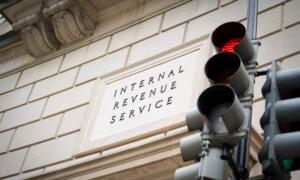The Internal Revenue Service (IRS) has processed fewer refunds so far this year, with the agency’s number of refunds dropping 19.99 percent from last year. Besides this, the total amount refunded is also lower this year.
The 2023 filing season began on Jan. 23, while this year’s season began on Jan. 29. The delay in processing times has not been considered, as computations were made based on the number of files processed.
According to calculations by The Epoch Times, there was also an 18.29 percent decrease in the total amount refunded relative to the files processed. The agency processed $66.98 billion worth of refunds in 2024, down from the $87.24 billion last year.
The deadline for filing taxes this year is April 15. As there are several more weeks left, the refund data can keep fluctuating. So far, 34.74 million returns have been received by the IRS, which is only a portion of the 128.7 million returns it expects by the deadline.
The average refund amount provided to taxpayers saw a slight 2.1 percent increase to $3,207, reported the agency, with the higher tax refund amounts being in line with expert expectations.
Elevated inflation forced the IRS to adjust many of its provisions in 2023, pushing standard deductions to a higher level and raising tax brackets by 7.1 percent.
“Say your income didn’t keep pace with inflation—you made the same as the prior year but didn’t increase your income by that inflation rate of 7 percent or so—you could see a better refund.” Modeling last year’s refund data and inflation adjustments made by the IRS, Mr. Steber calculates up to 10 percent more refunds in this category.
Last year, the earnings of a median worker rose by 5.5 percent, less than the IRS’ 7.1 percent inflation adjustments.
“A lot of people didn’t keep pace with inflation,” he said, adding that Americans in the middle and lower income groups are more likely to benefit from higher refunds.
Filing Refunds
In an interview with Fox, Eric Bronnenkant, head of tax at online financial adviser Betterment, advised taxpayers to file as early as possible.“Once you’re relatively certain that you have all of your tax documents, file as soon as you can so that you can start investing your money … Because, in general, the IRS doesn’t pay you interest on your refunds. So, getting that money in your hands sooner is better, for sure.”
Michelle Su, a CPA based in San Francisco, told Yahoo Finance that if a taxpayer has received large refunds multiple times over the past years, this is an indication that money was being withheld from their paychecks.
“They are essentially giving the government an interest-free loan, and putting less money in their own pockets,” she said. “It would be a better use of their money to decrease tax withholdings to pay off consumer debts or take the money to put in savings products for interest income.”
Taxpayers can change the amount of taxes withheld from paychecks by submitting a W-4 form to their employer.
However, experts also advise taxpayers not to pay inadequate estimated taxes as they will end up owing interest. The usual rule of thumb is to pay 90 percent of the current year’s tax liability or 100 percent of the previous year’s taxes.
“While it’s better not to get a refund, you also don’t wanna get stuck in a position where you don’t have the money at hand to pay outstanding taxes and face a penalty charged with an interest,” said Janet Holtzblatt, senior fellow at the Tax Policy Center.
The IRS only recently began issuing refunds for people who claimed the Earned Income Tax Credit (EITC) or the Additional Child Tax Credit (ACTC). The agency expects filers with the credits to get refunds by Feb. 27. Some taxpayers may see their refunds a few days earlier.
“By law, we can’t issue EITC or ACTC refunds before mid-February. This includes your entire refund, not just the part that’s related to the credit you claimed on your tax return,” the IRS stated.
“If you claim the EITC or ACTC, we may need more information from you about your return. If we do, we will send you a letter.”







